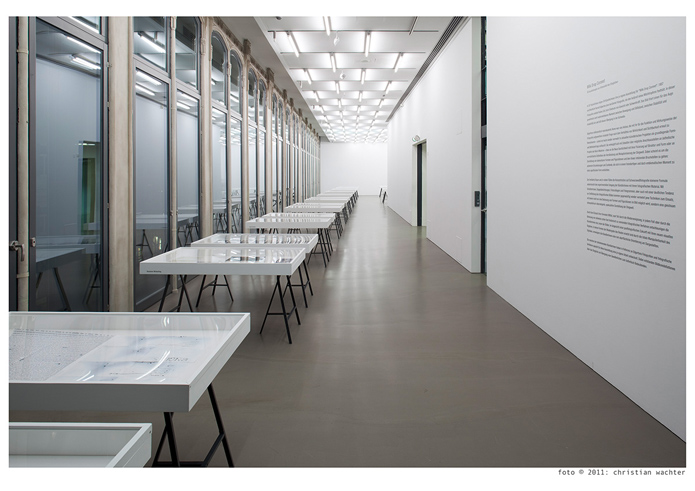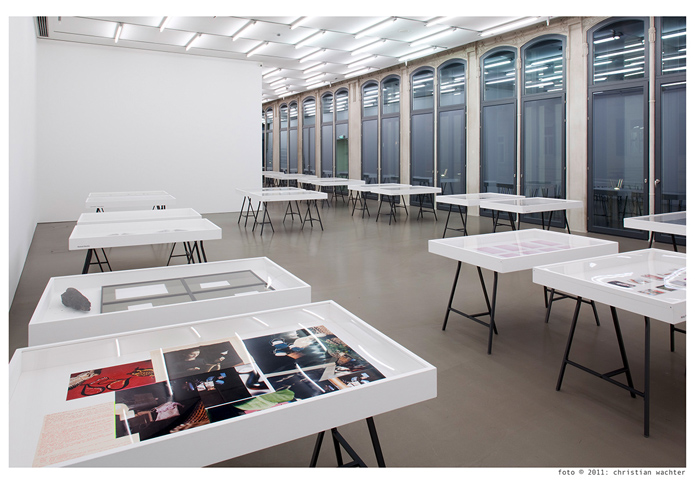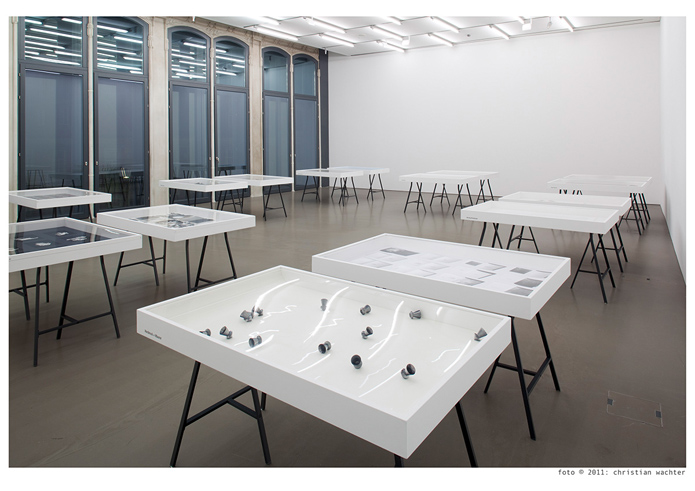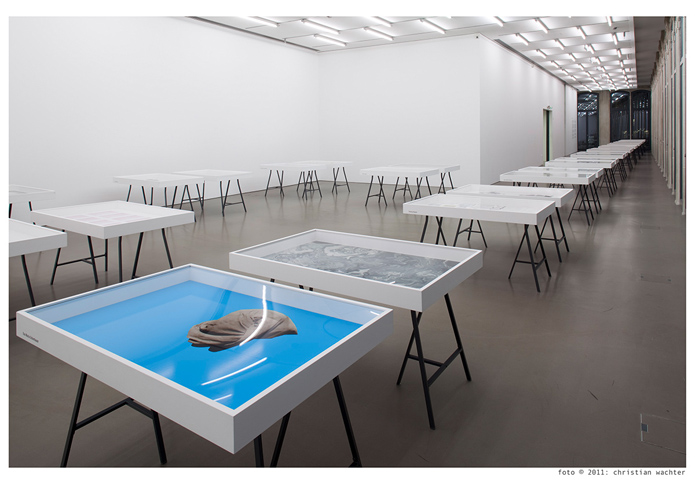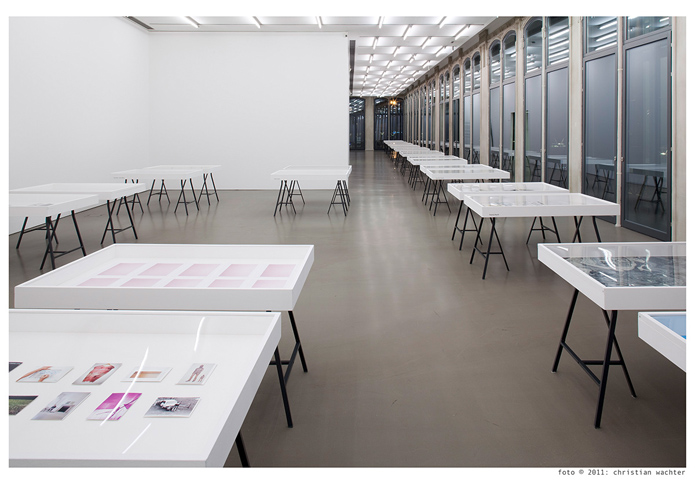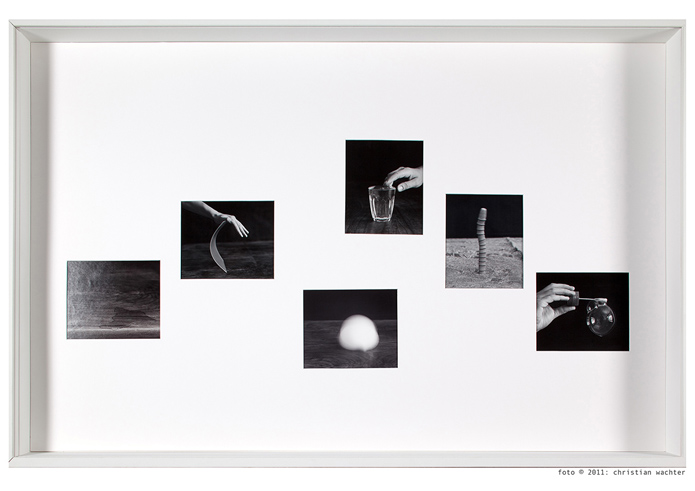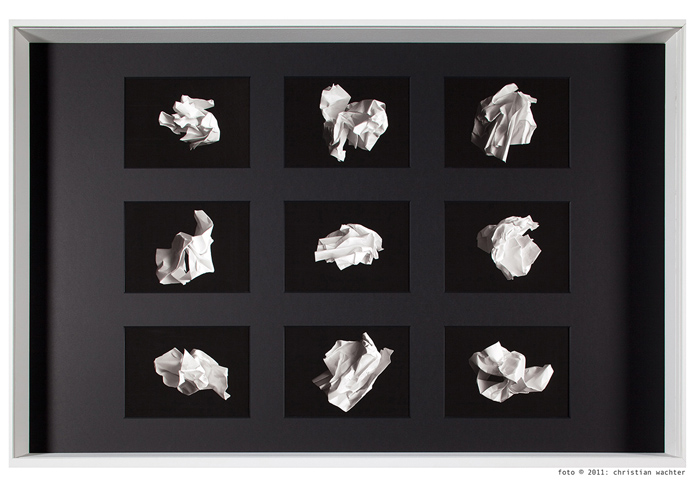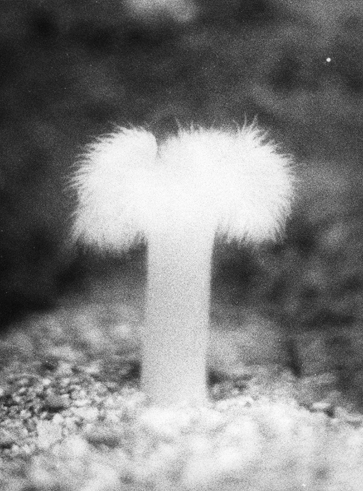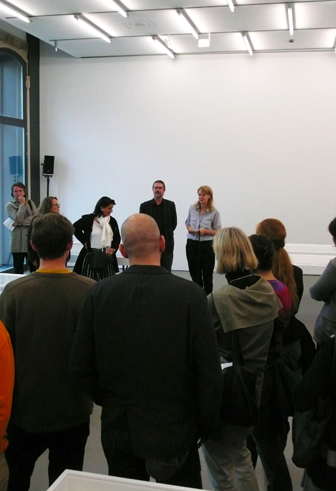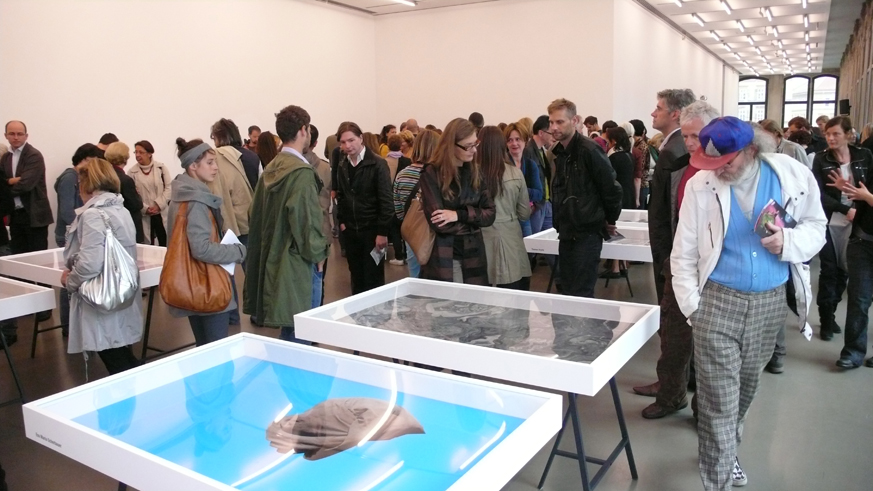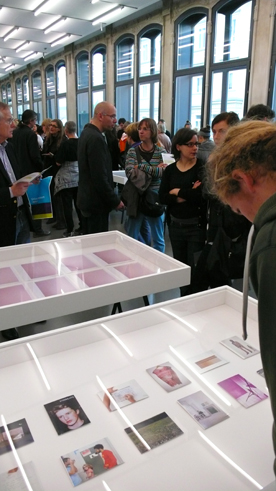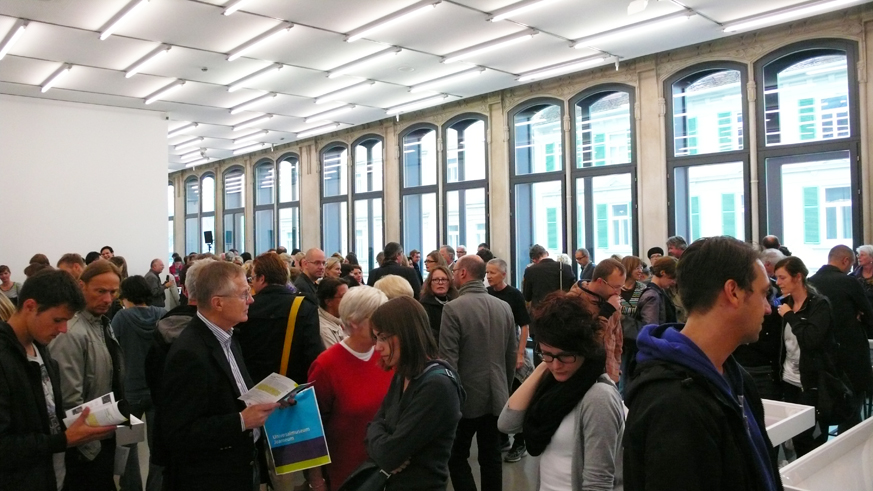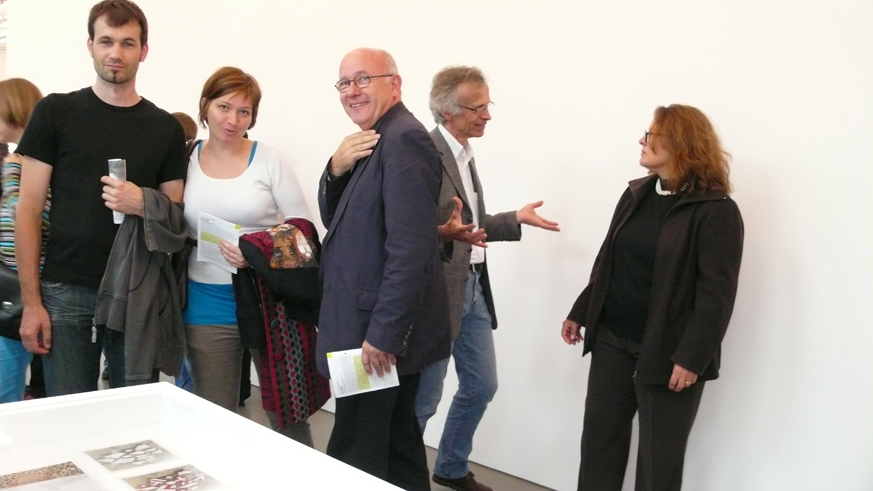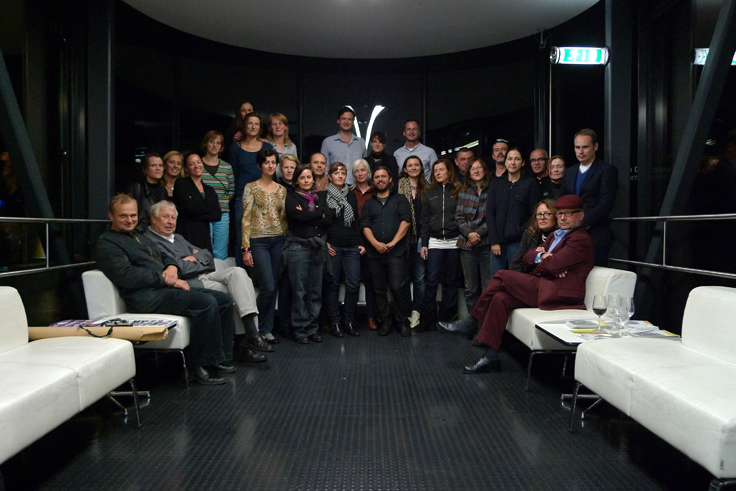Milk Drop Coronet
30 Exhibitions on the Virtuosity of Thingness
Infos
Duration
26.9.2010 – 9.1.2011
Opening and Performance
25.09.2010, 12am
With
Thomas Bayrle (DE), Walead Beshty (GB), Björn Braun (DE), Agnieszka Brzeżańska (PL), Natalie Czech (DE), Jeanne Faust (DE), Hans-Peter Feldmann (DE), Aurélien Froment (FR), Sylvia Henrich (DE), Horáková + Maurer (CZ/AT), Susan Howe / James Welling (US), Margarete Jakschik (PL), Annette Kelm (DE), Herwig Kempinger (AT), Heinz Peter Knes (DE), Ernst Koslitsch (AT), Tatiana Lecomte (FR), Jochen Lempert (DE), Ulrike Lienbacher (AT), Lotte Lyon (AT), Eva Maria Ocherbauer (AT), Markéta Othová (CZ), Michael Schmidt (DE), Gregor Schmoll (AT), Roman Schramm (DE), Stefanie Seufert (DE), Dirk Stewen (DE), Josef Strau (AT), Barbara Trautmann (DE), Susanne Winterling (DE)
Curated by Reinhard Braun & Maren Lübbke-Tidow
Spatial design: Barbara Trautmann
Curatorial assistance and project management: Margit Neuhold
Co-produced by steirischer herbst 2010
Intro
It was in 1957 that Harold Edgerton published that famous photograph of a milk drop splash. There is no time, no impression of weight or gravity in this photograph. The picture captures a moment between motion and standstill, between stability and instability, suspending this transition in time. How does this relationship between stability and instability stand today? How can photographic devices be used to create a picture in which the object world appears to be thrown off balance or shifted in terms of emphasis? How can processes of structural change and transformation be made visible using photography? These questions are resurfacing with increasing frequency in current artistic projects as fundamental questions of form, connected with debates on possible links to aesthetic projects following modernism – for example to New Objectivity with its fixation on structure and form or to surrealistic aesthetics of mystification and metaphorisation of the object world. It would seem to be a matter of representing elementary forms and figurations and their intrinsic fractures: ephemeral phenomena and states that condense into a specific form in an alien and yet emblematic moment. The aim is not the disclosure or aestheticisation of reality but rather to explore the still-disputed question concerning the relation between visibility and reality.
In 30 table-top showcases 30 artists present their exhibition within the exhibition. The limited space emphasises the artists’ experimental handling of their photographic material. For example with silhouettes, double exposures, photocollages and photograms, but also with a marked tendency to remove colour from the photographic image, artists are currently once again favouring those techniques that allow them not only to emphasise forms and figurations in the image, but which also permit, as it were, an atmospheric and exaggerated, speculative representation of the object world. In this sense the exhibited works relate to debates on possible links to aesthetic projects following modernism – for example to New Objectivity with its fixation on structure and form or to surrealistic aesthetics of mystification and metaphorisation of the object world.
Read more →Milk Drop Coronet. 30 Exhibitions on the Virtuosity of Thingness
It was in 1957 that Harold Edgerton published that famous photograph of a milk drop splash. There is no time, no impression of weight or gravity in this photograph. The picture captures a moment between motion and standstill, between stability and instability, suspending this transition in time. How does this relationship between stability and instability stand today? How can photographic devices be used to create a picture in which the object world appears to be thrown off balance or shifted in terms of emphasis? How can processes of structural change and transformation be made visible using photography? These questions are resurfacing with increasing frequency in current artistic projects as fundamental questions of form, connected with debates on possible links to aesthetic projects following modernism – for example to New Objectivity with its fixation on structure and form or to surrealistic aesthetics of mystification and metaphorisation of the object world. It would seem to be a matter of representing elementary forms and figurations and their intrinsic fractures: ephemeral phenomena and states that condense into a specific form in an alien and yet emblematic moment. The aim is not the disclosure or aestheticisation of reality but rather to explore the still-disputed question concerning the relation between visibility and reality.
In 30 table-top showcases 30 artists present their exhibition within the exhibition. The limited space emphasises the artists’ experimental handling of their photographic material. For example with silhouettes, double exposures, photocollages and photograms, but also with a marked tendency to remove colour from the photographic image, artists are currently once again favouring those techniques that allow them not only to emphasise forms and figurations in the image, but which also permit, as it were, an atmospheric and exaggerated, speculative representation of the object world. In this sense the exhibited works relate to debates on possible links to aesthetic projects following modernism – for example to New Objectivity with its fixation on structure and form or to surrealistic aesthetics of mystification and metaphorisation of the object world.
The selected artists avail themselves of a method of “unobjective objectivity” whose logic would seem to lie somewhere between concealed allusion and succinct, overt showing, with which they address a constantly renewed handling of classical questions of representation, to which photography remains bound.
Particularly in the visual media, countless unimportant details often prevent us from noticing what is most important – a phenomenon that sociologist Pierre Bourdieu referred to as “hiding by showing”. For Bourdieu this phenomenon also has political implications, because what is commonplace hides what is important, because the spectacularisation of banality hides the interest in imperceptible changes, and because the world is transformed into an incoherent sequence of incomprehensible snapshots. Or, as Alain Badiou puts it: “It is what orders, in all the arts, the formal principle: the capacity to render visible for everyone what, for the medium and for commerce, and thus also for everyone (…) does not exist.”
Thus, by using their formal devices and with the aid of their images the artists at the exhibition seem to pursue a counter-strategy: they show by hiding – they thus slow down the interpretation of the images and reject a purely superficial orientation based on what is depicted. In a way, they follow Bourdieu’s call to make usual things unusual, to portray them in such a way as to make visible how extraordinary they are – like the milk drop frozen in time in Edgerton’s photo.
One key link to the theme of steirischer herbst 2010 – “Masters, tricksters, bricoleurs” – is the exhibition dispositif of the thirty table-top showcases as thirty “exhibition spaces”: a terrain of showing and seeing that differs markedly from the convention of the white cube and which entangles visitors intimately and distractedly in both the formal and image-political debate through and between the exhibited positions. How much virtuosity must the viewers muster to create the “text” of the exhibition? By oscillating on the thin line between seeing and knowing, history and aesthetics, contingency and emblematism, objectivity and mystification, they also challenge the traditional allocations of photography as a technique of showing and seeing but also, in so doing, the rules of recognition, interpretation and understanding.



